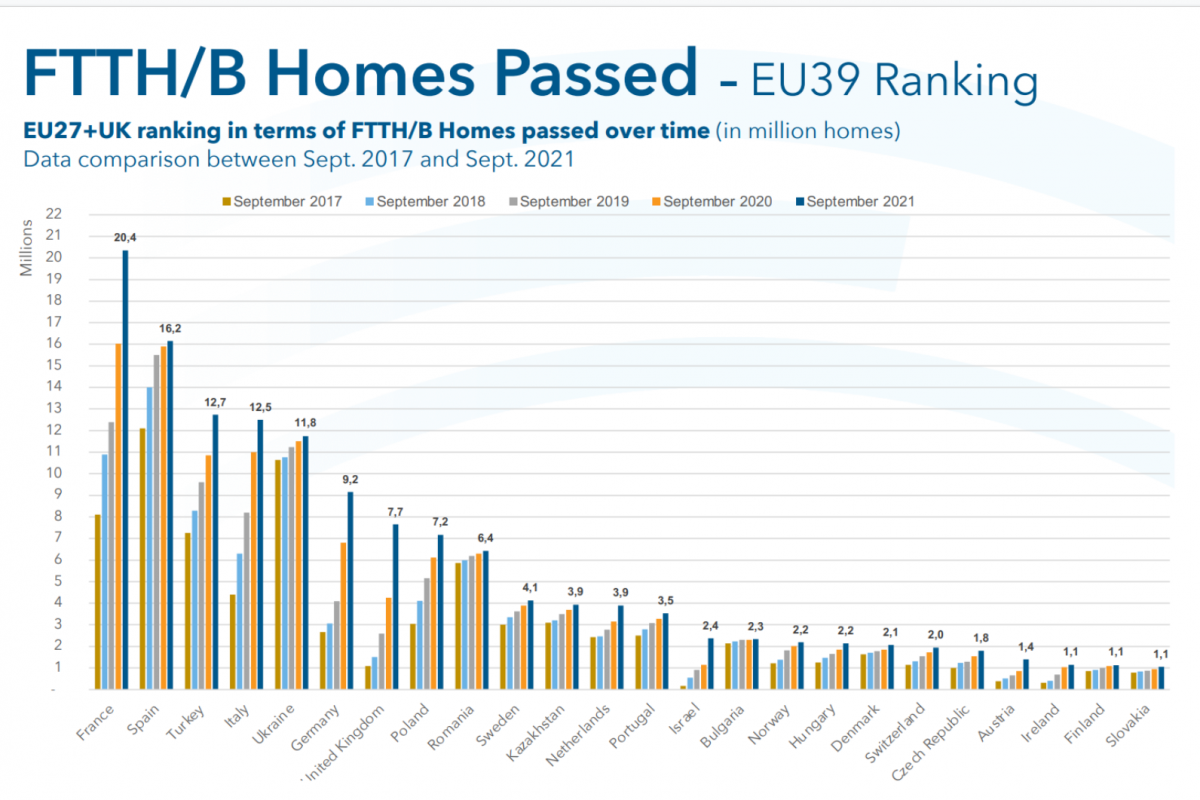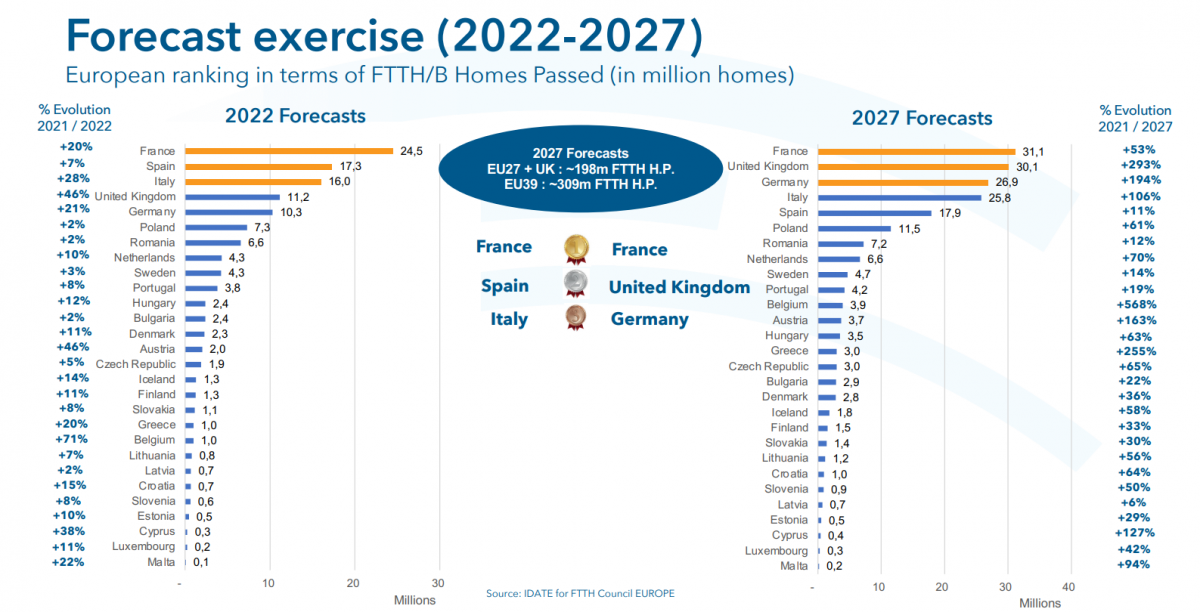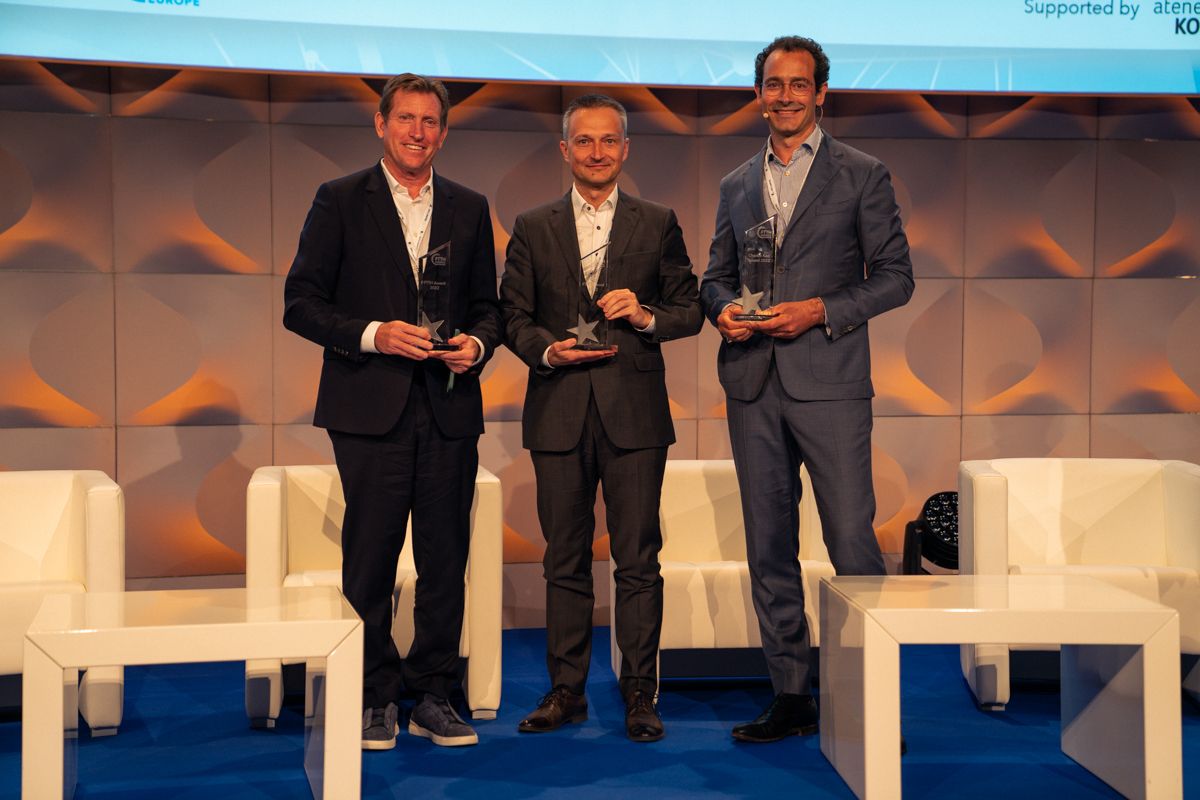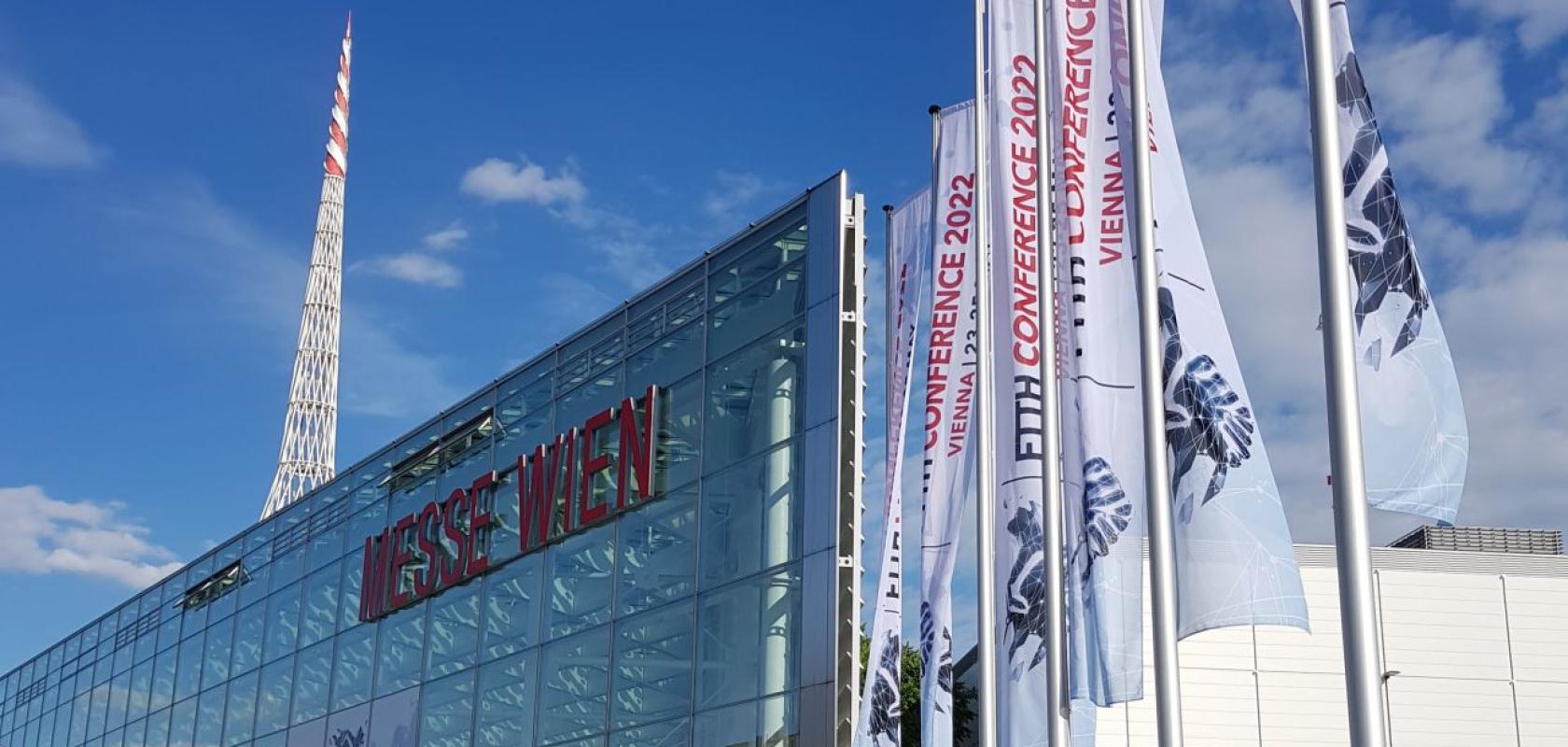Some of the key developments from the first physical FTTH Conference in two years
The FTTH Conference returned in May to its physical form after two years of – admittedly, very well executed – virtual events.
Visitors flocked to the Messe Wien Congress Centre to network with industry contacts, listen to the almost 40 workshops and panels, and see what the 100+ exhibitors were showcasing. While there were fewer new launches revealed at the event, there was a host of products on display and being demonstrated for the FTTH market in Europe.
Of course, amongst the conference topics was the always anticipated reveal of the market panorama and global ranking report, as well as the FTTH forecasts and, new for this year, FTTH/B in Rural Areas report.
Reports are based on the latest available data from September 2021 and amongst their findings, the council says they confirm the continuous progress of fibre roll out, with full-fibre connectivity being a clear priority for EU authorities, national governments and market players across Europe.
The Market Panorama revealed that the total number of homes passed with FTTH/B in the EU39* countries reached nearly 198.4 million in September 2021, compared to 176.3 million in September 2020. The main movers in terms of homes passed in absolute numbers are France (+4.3 million), the UK (+3.4 million), Germany (+2.4 million) and Italy (+1.5 million).

Credit: FTTH Council Europe/iDate
The top five annual growth rates in terms of homes passed is headed by Belgium (+109 per cent), Greece (+90 per cent), Cyprus (+83 per cent), United Kingdom (+80 per cent) and Austria (+62 per cent). The FTTH/B coverage rate in EU39 now amounts to 57 per cent (up by 4.5 per cent) and the coverage rate in the EU27 countries, plus the UK, nearly reaches half of the total homes – 48.5 per cent (up by 4.6 per cent). These data confirm the continuous upward trend that has been observed for several years in a row.
The number of FTTH and FTTB subscribers in the EU39 region reached 96 million, with EU27+UK accounting for 60 per cent. The five fastest-growing markets in terms of new subscribers were France (+3.8 million), Spain (+1.2 million), Romania (+1 million), Italy (+820 thousand) and the UK (+765 thousand).
By September 2021, the EU39 FTTH/B take-up rate hit 48.5 per cent (up by 3.6 per cent from the previous year). The growth was even more rapid in the EU27+UK, where the take-up rate reached 52.4 per cent (up by 5.6 per cent).
Interestingly, altnets still constitute the largest part of FTTH/B players, with around 57 per cent of the total homes in the EU39 being passed by alternative ISPs and around 39 per cent by the incumbent ISPs, with the remaining 4 per cent being municipalities/utilities. Overall, there is a strong trend of acceleration of fibre deployment, with a firm commitment to cover both urban and rural areas.
In terms of the homes still to be covered, the three countries represent 58 per cent of the total number of households to be covered: Germany with more than 32 million, the UK with more than 21 million and Italy with more than 13 million. All of the top three countries show clear signs of progress being made this year.
Global ranking
On to the always eagerly anticipated global ranking, which revealed that 20 countries have achieved penetration rates higher than 50 per cent. The global top five ranking is led by UAE with 97 per cent, followed by Singapore (95.8 per cent), China (94.9 per cent), South Korea (91.1 per cent) and Hong Kong (86.2 per cent).
In the European region, for the third consecutive year in a row, Iceland topped the European FTTH/B penetration ranking, with a 78.4 per cent penetration rate. It is followed by Spain (68.4 per cent), with Sweden grabbing third place (64.4 per cent). Seven countries passed the 50 per cent penetration rate mark (Iceland, Spain, Sweden, Portugal, Norway, Romania and Latvia). Overall, the report observed that Eastern European and Nordic countries are showing relatively higher penetration rates, mainly due to a proactive state intervention favouring fibre expansion.
Fibre forecasts
According to the council, the market forecasts are consistent with previous estimates and predict around 199 million homes passed for FTTH/B in 2027 in EU27+UK and 309 million homes passed in EU39 region. It is expected that the top three countries in terms of homes passed will be France (31.1 million), UK (30.1 million) and Germany (26.9 million).

Credit: FTTH Council Europe/iDate
The number of subscribers is predicted to reach 124 million in EU27+UK and 190 million in EU39 region, and the take-up rate will also experience steady growth in both regions, with the number of subscribers against homes passed expected to reach 62.2 per cent in EU27+UK and 61.4 per cent in EU 39.
Rural areas
The report shows that, by September 2021, only 30 per cent of rural inhabitants could enjoy capabilities offered by full fibre connectivity (compared to an average of 49 per cent of European households in the EU27+UK region, which are covered by FTTH/B networks).
The five countries with the highest rural FTTH/B coverage are Denmark (76 per cent), Latvia (74 per cent), Spain (66 per cent), Romania (62 per cent) and Luxembourg (55 per cent).
The report highlights that immediate action should be oriented towards the rural regions to eliminate the ‘white spots’. It advised that an aggressive promotion and an intensified support (subsidies, public-private partnerships and so forth) of rural deployments should be carried out to reach every European premise with high-speed, fibre-based broadband connectivity.
Eric Festraets, president of the FTTH Council Europe, said: ‘The data from the latest Market Panorama confirms that fibre rollout is steadily advancing at an increasingly faster pace. We can say with confidence that we are on the right track to meet the EU’s ambitious connectivity targets set out by “Gigabit Society 2025” and “Digital Compass 2030” strategies, yet the current momentum needs to be maintained and for this to happen support at the political and regulatory level will be key.’
Vincent Garnier, director general of the FTTH Council Europe, added: ‘The data clearly shows we are achieving great progress, thus contributing to the twin digital and green transition that will reshape how Europeans work, live and do business. Full fibre connectivity will be key to achieving the EU’s ambitious climate and sustainability targets. Moreover, the Covid-19 pandemic led to more data traffic and more demand, clearly demonstrating the necessity to intensify FTTH deployment and adoption.’
As well as the market report reveals, three prizes were awarded for an operator and two individuals that have actively contributed to the acceleration of FTTH in Europe. The Individual Award honours a single person for their unique efforts to make FTTH happen in Europe. The Operator Award acknowledges an operator company that has significantly contributed to the development and rollout of FTTH in Europe. The Charles Kao Award honours an individual who has made an outstanding life-long achievement and contribution to promoting full fibre connectivity (globally, but particularly in Europe).
Created in 2019, the latter award is in honour of fibre pioneer, Professor Charles Kao (1933-2018), who was awarded in 2009 the Nobel Prize in Physics for ground-breaking achievements concerning the transmission of light in fibres for optical communication. Eric Festraets, president of the FTTH Council Europe, presented the awards for outstanding contributions to the acceleration of FTTH deployment in Europe during the conference in Vienna.

Greg Mesch, CEO, CityFibre; Jacek Wiśniewski, CEO, Nexera and Alex Goldblum, CEO, Eurofiber collect their awards
UK alternative operator, CityFibre, picked up the Operator Award, while the Individual Award went to Jacek Wiśniewski, CEO of Polish wholesale operator and network owner, Nexera. Finally, the recipient of the Charles Kao Award was Alex Goldblum, CEO of Netherlands operator, Eurofiber.
Festraets commented: ‘What this year’s winners have in common is their passion for what they do, which results in excellent business performance greatly contributing to the FTTH rollout in Europe. I am pleased to present the FTTH Council Europe Operator Award to CityFibre, represented by CEO Greg Mesch. The FTTH Council Europe Individual Award this year is presented to Jacek Wiśniewski, CEO of Nexera. Alex Goldblum, CEO of Eurofiber, has been chosen as the winner of the Charles Kao Award. Beyond their individual achievements, their successes have even motivated others to invest more in full fibre and stimulated a healthy, competitive market.’
*EU39: EU27 countries + UK, 4 CIS countries (including Kazakhstan and Ukraine), and also Iceland, Israel, North Macedonia, Norway, Serbia, Switzerland and Turkey


